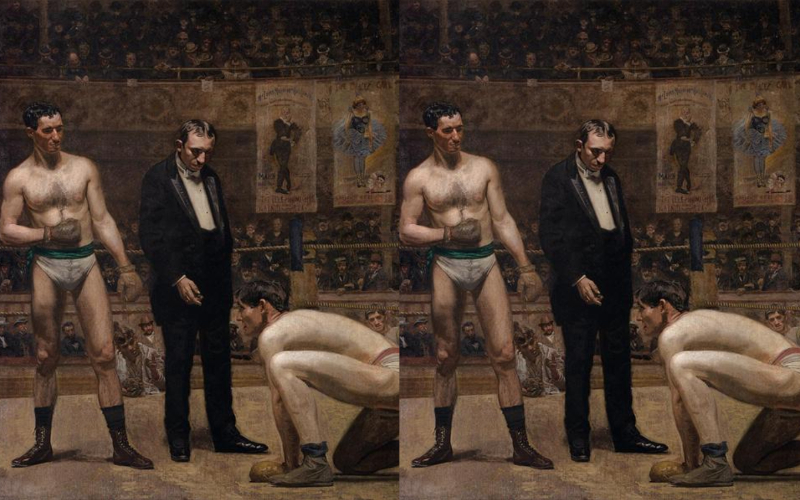In the latter half of the 1890s, Thomas Eakins went to prizefights at the Arena in Philadelphia, which was a short distance from his Chestnut Street studio and diagonally across from the Pennsylvania Academy of the Fine Arts.
He went with a number of his friends. Eakins was intrigued enough by the matches he witnessed to make friends with a number of the contestants and ask them to pose for him.
Three significant paintings—Taking the Count (1898), Salutat (1898)—Addison Gallery of American Art, Phillips Academy, Andover, Massachusetts, and Between Rounds (1899)—as well as about ten related sketches, studies, and portraits—were the end result.
About Taking the Count artwork
The artwork Taking the Count honors Thomas Eakins’s lifelong interest in athleticism and human fortitude. All eyes in the crowd are on the referee as he counts down the possible final seconds of the fight as a downed fighter tries to recover from a brutal blow. H. Walter Schlichter served as the referee for the actual fight, which took place between Charley McKeever (standing) and Jack Daly on Friday, April 29, 1898, in Philadelphia.
The first of Eakins’ three great boxing paintings, this monumental piece places the subject matter within the context of the fine arts. Prior to Eakins’ work on the subject, prints and the press accounted for almost all visual depictions of prizefighting.
Few works by a serious artist of Eakins’ time are comparable to how far removed they are from the lofty propriety that characterized American art in the 19th century. In contrast to the sophisticated conventions of the time, Taking the Count makes a stunning statement.











